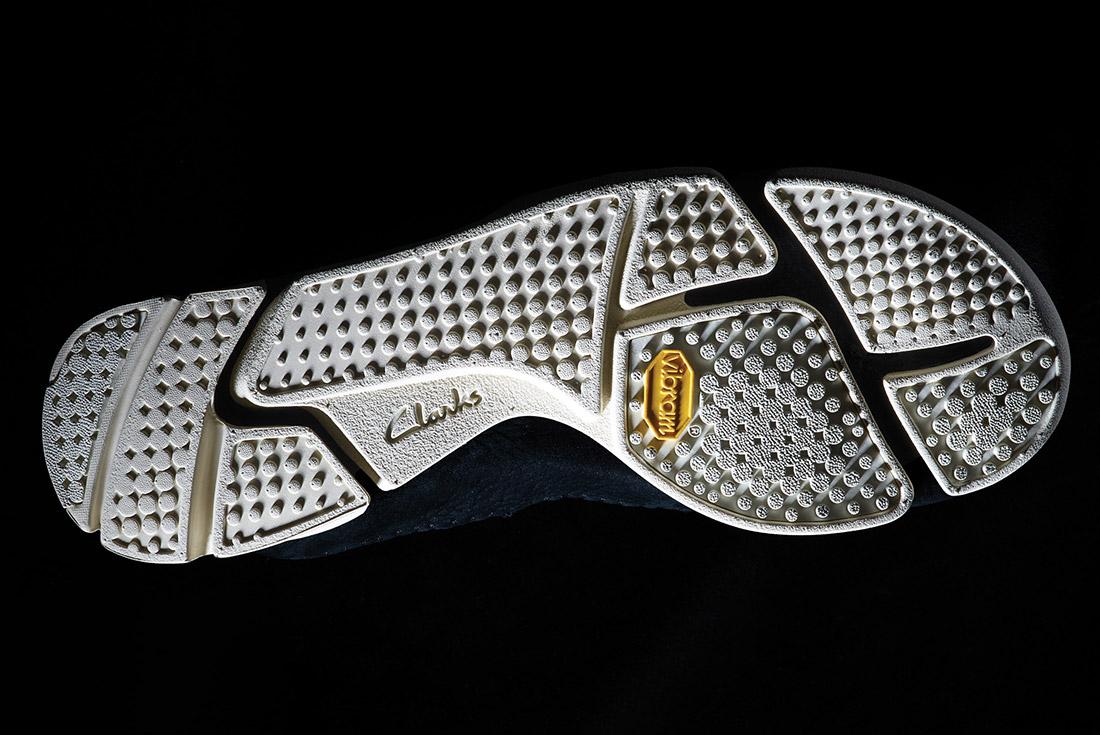Material Matters: Vibram Soles
Vibram don’t ever tread lightly. For over 80 years, the Italian sole providers have had the world at their feet, unlocking new surmountable surfaces with unwavering sure-footedness. Superlative tread compounds and ergonomic grip patterns are their premium export, denoted with the inimitable ‘marco oro’ golden badge that guarantees durable grip.
Forever changing the world with the first-ever rubber lugged sole, and innovations like the infamous FiveFingers, and the form-and-function first RollinGait, Vibram are committed to their ongoing quest to stop slipping. Step in for the gripping tale of Vibram soles.

Feet First
Vitale Bramani was among hordes of adventurers seduced by the rocky, snowy ascent of the Italian Alps. In 1935, six of Bramani’s friends met a tragic end during a mountaineering expedition, in circumstances that Bramani believed better footwear could’ve saved their lives. He sought to save the soles of all from that point on. In creating Vibram (an amalgamation of his name), Bramani gained some handy insight from neighbouring tyre manufacturers Pirelli, who also helped bankroll the development of the Carrarmato (Italian for ‘tank tread’) sole in 1937. Made using the same vulcanised rubber methods developed for car tyres, the cleated tread design proved to be the world’s first lugged sole. Surfaces were now suddenly safer – such that Vibram-equipped snow boots were the very first to stand atop K2 in 1954, a peak second only to Mount Everest. Following successful field-testing, it was time to take Vibram worldwide, with operations expanding into the US and China in the 60s and late-90s, respectively.

Crossover Appeal
The past 50 years have seen drastic developments in sole construction, with synthetic compounds like nitrile, EVA and PU leading the way. Specialising in rubber-based soles, Vibram have used top-secret formulations to create industry-leading compounds like the outdoors-ready Megagrip, lightweight Morflex, and environmentally-friendly Ecostep.
While their sole units are considered standard issue for quality shoes and boots, you may be slightly more hard-pressed to find a Vibram sole at your local sneaker store. However, the RollinGait sole (RGS) drew wider attention when it began appearing on what seemed like every high-fashion faux-running sneaker in the mid- to late-2010s. Developed in conjunction with to revive the Silver Shadow retro runner, the ergonomic rocker design encouraged smooth transition from heel strike to toe-off – something the likes of and were unlikely thinking about when speccing the RGS on their designs.
However, it's not fair to say Vibram have only just appeared in the sneaker market over the past decade...
Compounding Kicks
On the mass end, have championed Vibram soles since at least the early 1980s, on flagship runners like the . Then Lou Whittaker took Vibram-soled boots up Everest soon after. This pioneering spirit continues today on the trail-ready Minimus line, and retrofitted silhouettes like the and featuring Vibram Megarip soles.
Japan’s very exclusive line upgrades the Chuck’s regular rubber sole with an exclusive Vibram sole called Canvas, made from XS Trek compound. The Christy wedge sole often seen on boots and moccasins has also christened the , the , and , among other sneakers.
Scale doesn't seem to be an issue for Vibram either, as they have helped develop proprietary sole units for relatively smaller labels like , , and .
Speaking of ALYX, remember in 2019 when head honcho collaborated with on the ? Users attached the supplied Vibram crampon attachment onto their own sneakers, turning it into a .
Similarly, Vibram sell a Portable Performance Sole made from their hardcore Arctic Grip compound that can be fitted to footwear when conditions get icy. So while sneakers aren't inherently designed to be easily repairable at the moment, modular attachments are a potential avenue for squeezing extra mileage and traction from your worn-out kicks.
However, more needs to be done to stop sneakers going straight to landfill because of some heel drag.
Another Lease on Life
By and large, sneakers are made by bonding the upper component to either a midsole and outsole combination, or one-piece unit. for making plimsoll sneakers like and Converse, but cement (glue) is the prevailing manufacturing technique. This fundamental construction method means sneakers aren't particularly conducive to overhaul and repair – seemingly making them destined for the bin once the sole is damaged.
But, there are workarounds. Experimental outfits like RECOUTURE out of Japan add a leather welt to sneaker uppers (much like traditional shoes and boots), allowing Vibram soles to be attached and replaced once worn out. This greatly extends the useful life of worn-out sneakers that would be otherwise unwearable. They’re just one out of the thousands of cobblers worldwide with the Vibram plug. Over 4000 are in America alone – many of whom will be able to perform old-world craft on your old-school sneakers!
Getting to the People
Since the mid-2010s, Vibram have toured the US and Europe with the Sole Factor program, exposing people to the hidden potential their worn-out shoes have to be repaired.
For proper geeking out, peruse Vibram's . There are over 150 pages of different half-soles, heels, sole units, and sole sheets covering 18 different uses and 36 compound types! You'll find it hard not to find the right sole for the right situation for the right sneaker...
While getting shoes to a good cobbler may be challenging in some parts of the world, Vibram have been working on a system called Vibram Sole Semble. It's yet to hit the market, but it'll involve users combining Vibram soles to uppers by way of a DIY lace system. Sounds intriguing... and it could become a real game-changer in making your favourite sneakers go the distance.
